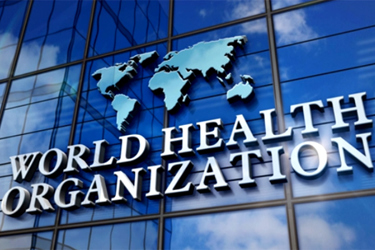Nitrosamines: New WHO Guidance Provides Expanded Risk Assessment Considerations
By Tim Sandle, Ph.D.

Nitrosamines (N-nitrosamines) are organic compounds that feature a nitroso group bonded to a deprotonated amine. These mutagenic chemicals pose a concern across food and medicines since most nitrosamines are carcinogenic (in particular, connected to incidences of gastric and esophageal cancers) and several are genotoxic.
Seven types of nitrosamines are considered to be potential contaminants of pharmaceutical products: N-nitrosodimethylamine (NDMA), N-nitrosodiethylamine (NDEA), N-nitroso-N-methyl-4-aminobutanoic acid (NMBA), N-nitrosoisopropylethyl amine (NIPEA), N-nitrosodiisopropylamine (NDIPA), N-nitrosodibutylamine (NDBA), and N-nitrosomethylphenylamine (NMPA). Each of these is an organic compound with a similar chemical structure of R₂N−N=O, where R is usually an alkyl group. Each features a nitroso group bonded to a deprotonated amine.1 The allowable daily intake differs depending on the class of nitrosamine and, in the case of pharmaceuticals, the dose and route of administration.
Such chemicals may pose a risk to some pharmaceutical manufacturing processes, particularly in biologicals containing chemically synthesized fragments, biologicals using processes where nitrosating reagents are deliberately added, and biologicals packaged in primary packaging containing nitrocellulose.
Several regulatory agencies have previously issued guidelines on nitrosamines and pharmaceutical products. The World Health Organization (WHO) has added to the availability of documents with a new draft guidance (April 2024).2
Understanding The Risk
There are broad categories of potential sources of nitrosamines that could impact pharmaceutical manufacturing, including:3
- Residual impurities may result from synthesis of APIs and excipients.
- Nitrosamine precursors are potentially present in the water used in drug product manufacturing. The potable water used at the start of the purification process could potentially contain low levels of chloramine and or nitrites/nitrates. Further care needs to be taken if a water system is sanitized by chlorination.
- Nitrosamines or nitrosamine precursors are potentially introduced from the manufacturing process.
- Nitrosamines or nitrosamine precursors have the potential to be leached into the drug product from primary packaging (for example, nitrocellulose in PTP aluminum printing ink commonly presents as a nitrosating agent).
Regulatory Agency Activities
Several regulatory agencies have published guidance about the control of nitrosamine impurities in medicines, such as the U.S. FDA in 2020,4 following recalls of various medications due to the presence of nitrosamine impurities (such as blood pressure medications like angiotensin II receptor blockers and heartburn medications, such as those based on ranitidine). The FDA guidance called upon drug manufacturers to develop risk assessment strategies for potential nitrosamines in any pharmaceutical product at risk for their presence. The European Medicines Agency issued a similar guidance, also in 2020.5
WHO Guidance
Adding to the guidances is a new draft guidance on nitrosamines from the WHO. This document is more extensive and detailed than either the FDA or EMA equivalent.
Risk Assessment
The WHO, and other regulators, call on pharmaceutical manufacturers to undertake a risk assessment to assess whether there is a nitrosamine risk. Risk assessments involve the following three steps:
- Step 1: Perform a risk evaluation to identify if APIs and/or finished products could be at risk of the presence of nitrosamines. The WHO guidance adds additional sources of nitrosamines, noting that some can arise from recycled solvents or reused catalysts from different processes or across manufacturing lines where there is inadequate control and monitoring.
- Step 2: If a risk is identified, proceed with confirmatory testing to confirm or refute the presence of nitrosamines. Manufacturers should report outcomes as soon as possible to the appropriate regulator.
- Step 3: If the presence of nitrosamine(s) is confirmed, companies should implement effective risk-mitigating measures and submit manufacturing variations to the appropriate regulatory authority.
The WHO guidance provides a useful adjunct to these steps, with additional consideration of:
- the daily dose of the medication,
- how long the medication is taken, and
- the level of the nitrosamine impurity in the finished product.
With the end product, the storage conditions are an important risk consideration, making storage time and temperature key components of stability trial criteria. Process conditions also extend to manufacturing, where the WHO guidance observes that some chemicals, satisfactory under one set of conditions, can become susceptible to degradation under certain other reaction conditions. High temperatures used during manufacturing is an example of an elevated risk condition.
Hence, the WHO guidance recommends a risk assessment address the following:
- assessment of premises,
- design and use of equipment,
- details of materials,
- explanation of the route of synthesis,
- description of the production process, as certain processing steps, such as granulation or drying, can increase the risk of nitrosamine impurity formation,
- understanding of the interaction between chemicals, excipients, solvents (especially amide solvents), APIs, and packaging components, including evaluating the quality and purity of each component used in any step of processing, and
- the intended use of the product and route of administration.
The manufacturer needs to understand whether any nitrate, such as sodium nitrate, is used, including in reagents and catalysts, as well as if any nitrosating agent is used.
The guidance suggests asking two standard risk questions with respect to each of the above areas of potential risk:
- What is the probability of the occurrence of nitrosamine impurities?
- What are the consequences and what is the severity?
These questions are addressed along with an understanding of any detection methods.
Cross-contamination
When performing a risk assessment, a detailed understanding of the manufacturing process is important, especially where amines and nitrite salts come together under acidic conditions, since nitrite salts can form nitrous acid, which, in turn, can react with an amine to form a nitrosamine. Manufacturing processes that use nitrite salts are at a special risk6. The WHO guidance places an additional emphasis on cross-contamination, especially in facilities where equipment is shared. This necessitates a focus on effective cleaning validation, considering solubility, potency, toxicity, and cleanability. Inadequate and unvalidated cleaning procedures would pose a significant risk.
The WHO document presents further considerations for cross-contamination assessments, including the potential for traces or residue of unwanted substances being present in materials, on surfaces of equipment, in the manufacturing environment, or in carrier material such as water. These trace quantities can be difficult to remove, and the assessment process can be hampered by such residues being difficult to detect through conventional analytical procedures. Methods used, such as gas chromatography or mass spectrometry, should be capable of detecting nitrosamines at sensitivities in the parts-per-billion range.
Supplier Assessment
The WHO guidance additionally recommends that a risk assessment is performed for each supplier of APIs and excipients around the potential for the supplied materials to contain nitrosamines. The guidance recommends that particular attention is paid to the possibility of APIs or excipients containing nitrites (NO2-), nitrous acid, nitrates (NO3-), nitric acid, or azides (N3-) or their sources (for example, microcrystalline cellulose) or processing aids used in their manufacture (such as from water or nitrogen). To achieve this in-depth understanding, a detailed discussion is required with each vendor. Supplier assessments should be supported by audits.
Drug Development
The WHO guidance recommends that the synthesis of the drug product and the reaction conditions that may produce nitrosamines are understood and avoided (where possible) during the drug process development stage. This may require the optimization of pH, temperature, and the reaction time.
The WHO draft guidance remains available for public comment until June 9, 2024.
References
- Fukuda, S., Kondo, K., Fukumoto, S., Takenaka, N., Uchikawa, O. and Yoshida, I., 2023. N-723 Nitrosodimethylamine Formation in Metformin Drug Products by the Reaction of Dimethylamine and Atmospheric NO2. Organic Process Research & Development, 27(11),725: 2123-2133
- WHO good manufacturing practices considerations for the prevention and control of nitrosamine contamination in pharmaceutical products, Working document QAS/24.943, April 2024: https://cdn.who.int/media/docs/default-source/medicines/norms-and-standards/current-projects/qas24_943_gmp_nitrosamines_forpublic52f95166-1c71-4cc2-a499-05bc4967bf14.pdf
- Boetzel, R., Schlingemann, J., Hickert, S., Korn, C., Kocks, G., Luck, B., Blom, G., Harrison, M., Francois, M., Allain, L. and Wu, Y., 2023. A nitrite excipient database: a useful tool to support N-nitrosamine risk assessments for drug products. Journal of Pharmaceutical Sciences, 112(6),733: 1615-1624
- FDA. Control of Nitrosamine Impurities in Human Drugs, Food and Drug Administration, September 2020: https://www.fda.gov/media/141720/download
- EMA. Questions and answers for marketing authorisation holders/applicants on the CHMP Opinion for the Article 5(3) of Regulation (EC) No 726/2004 referral on nitrosamine impurities in human medicinal products – EMA/409815/2020 Rev.1: https://www.ema.europa.eu/en/documents/referral/nitrosamines-emea-h-a53-1490-questions-answers-marketing-authorisation-holders-applicants-chmp-opinion-article-53-regulation-ec-no-726-2004-referral-nitrosamine-impurities-human-medicinal-products_en.pdf
- Gillatt, PN, RJ Hart, CL Walters, and PI Reed, 1984, Susceptibilities of drugs to nitrosation under standardized chemical conditions, Food Chem Toxicol, 22(4): 269–274
About The Author:
 Tim Sandle, Ph.D., is a pharmaceutical professional with wide experience in microbiology and quality assurance. He is the author of more than 30 books relating to pharmaceuticals, healthcare, and life sciences, as well as over 170 peer-reviewed papers and some 500 technical articles. Sandle has presented at over 200 events and he currently works at Bio Products Laboratory Ltd. (BPL), and he is a visiting professor at the University of Manchester and University College London, as well as a consultant to the pharmaceutical industry. Visit his microbiology website at https://www.pharmamicroresources.com.
Tim Sandle, Ph.D., is a pharmaceutical professional with wide experience in microbiology and quality assurance. He is the author of more than 30 books relating to pharmaceuticals, healthcare, and life sciences, as well as over 170 peer-reviewed papers and some 500 technical articles. Sandle has presented at over 200 events and he currently works at Bio Products Laboratory Ltd. (BPL), and he is a visiting professor at the University of Manchester and University College London, as well as a consultant to the pharmaceutical industry. Visit his microbiology website at https://www.pharmamicroresources.com.
